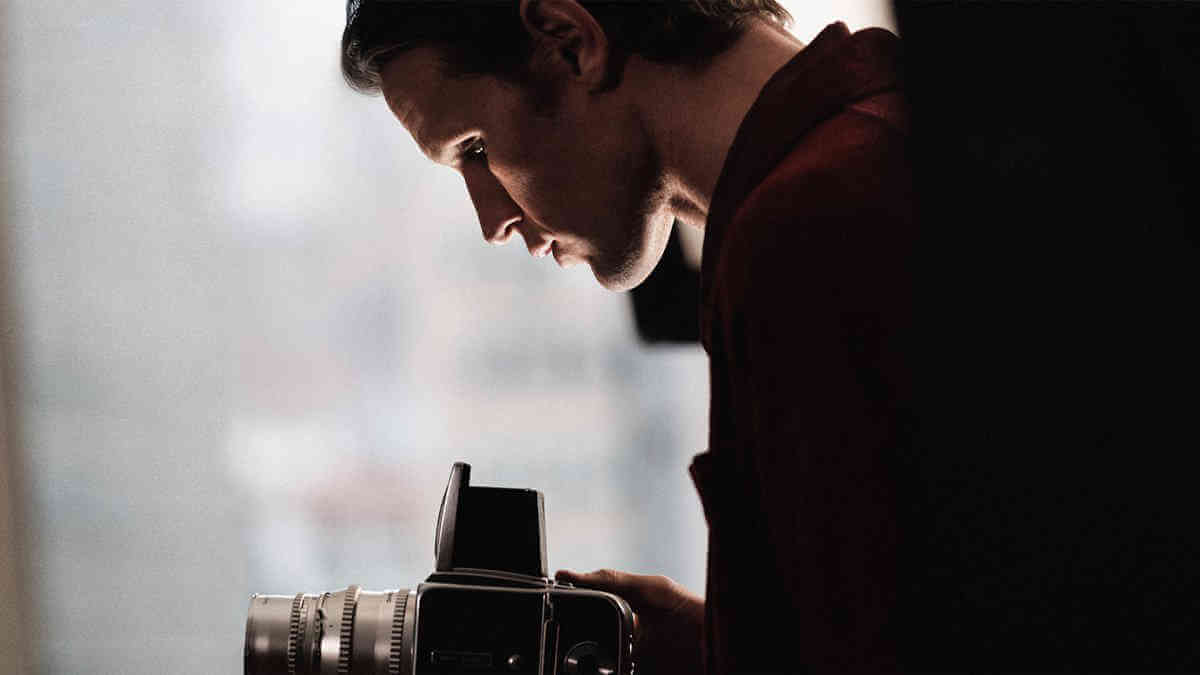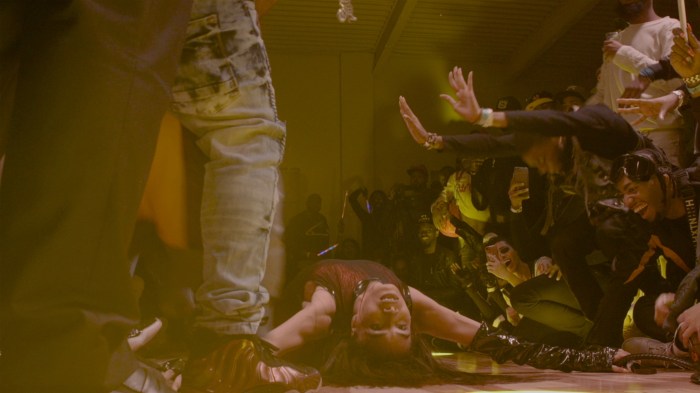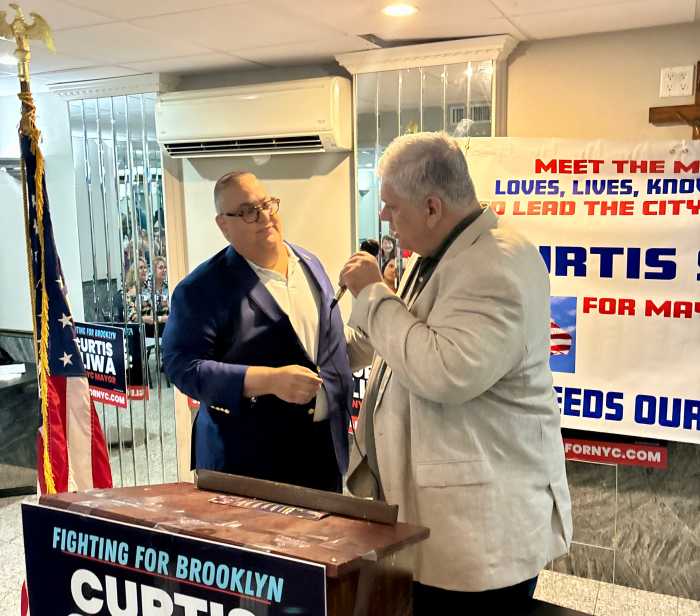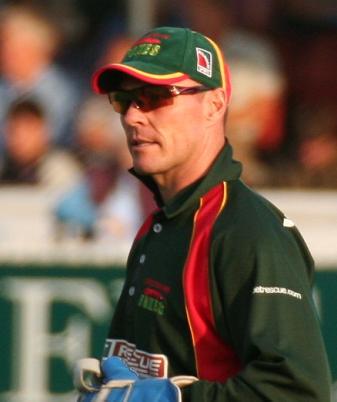Ondi Timoner’s canny, episodic biopic “Mapplethorpe” chronicles significant moments in the last 20 years of the famed gay photographer’s life. It also features dozens of the artist’s indelible images. Robert (Matt Smith) is first seen in his dorm room at Pratt Institute in Brooklyn in 1969. He soon meets Patti Smith (Marianne Rendón), and they become friends, supporting each other and moving into the Chelsea Hotel. At the hotel, a neighbor encourages Robert to take photographs.
Soon, Robert is exploring his sexuality and taking S&M-tinged photos. His work captures the eye (and heart) of curator and benefactor Sam Wagstaff (out actor John Benjamin Hickey), and he starts to achieve success. Around this time, his brother Edward (Brandon Sklenar) comes to New York to be his assistant. Later, Robert finds a muse in Milton Moore (McKinley Belcher III), an African-American man who becomes his lover.
“Mapplethorpe” focuses on these relationships to tell the story of a self-destructive but genius artist whose work pushed boundaries as he pushed people away in his personal life. Timoner spoke with Gay City News about making her film and her thoughts about Mapplethorpe.
GARY M. KRAMER: Where did you first see Mapplethorpe’s work and how did it speak to you?
ONDI TIMONER: I saw the calla lilies when I was a 10-year-old girl. Someone gave me a Mapplethorpe flower calendar. That’s what’s funny about my trajectory with Mapplethorpe — I had no idea what he was up to! This project came into my life in 2006. Bruce Goodrich had written an original script. He met with me and chose me to produce and direct it. He thought a woman should do it. I was drawn to the balance of his work, life, and our history. I felt like this was someone who really took on a revolution through his camera in a way and managed non-stop until his work was in major museums. He broke the walls down. That’s what’s important. What he was doing at the time was so out there. He challenged what society could accept.
KRAMER: How did you conceive of this project and why did you approach Mapplethorpe’s life in the way that you did?
TIMONER: I wanted to create an anthem for artists. As soon as Robert picked up a camera, he was off to the underworld as it were. It was important to document that trajectory. I also couldn’t tell the story without telling the story of AIDS. I didn’t want to shy away from the way he destroyed his relationships. How perfect his photos were but how imperfect his personal life was. That balance was important — having a personal life and having it have rough edges. As a character, you become more hard-edged. You have to be tough when you see things others can’t.
KRAMER: Robert has four prominent relationships in the film — with Patti, Sam, Edward, and Milton. What were your thoughts on how they shaped him?
TIMONER: Patti Smith was such an important relationship. I couldn’t tell the story without that — the irony of him finding himself as an artist led him away from her. In the case of Sam, Sam was a man who finally found his muse, an artist he could live vicariously through. Sam could build and create Robert. He loved Robert dearly, but Robert was not monogamous. Sex was part of the process for Robert, framing guys up, possessing them, and putting them in his collection. Robert forced his brother Edward to change his [last] name. Imagine how crushing that was for Edward. Robert needed to mold Milton to be his creation, his Pygmalion. Robert had accomplished the success and fame he craved so dearly that everyone came to him. You’re not famous unless Robert takes your picture.
KRAMER: How do you find sympathy in a character who is self-destructive?
TIMONER: I do that with my movies a lot — because when people can’t decide if they like someone or not, they lean in. If viewers grapple with judging a character, it is because they are grappling with their own issues with themselves. Why did he do that? I don’t like him for that. With Robert you can’t help but respect him for sticking to doing what he did. He was fearless, or he had fear and he trampled it. He pushed the edges and blazed new trails. I think it’s important to realize that if you have flaws and guilt, you can realize you can still pursue your vision and still do great things.
KRAMER: Did you ever feel that you had to put yourself in Mapplethorpe’s mindset to recreate his photographs or see something in the way he did? What can you say about using his images and artwork?
TIMONER: We had free reign. The [Robert Mapplethorpe] Foundation was a pleasure to work with. What I chose to do was to tell the story of images I could put a story behind that would apply to his life — so the shot of the flower and the knife or the process of creating “The Man in the Polyester Suit” with Milton. There was a shot of Robert assessing flowers against the light and throwing some away — that was indicative of his exacting eye. His entire world was about conflict and contrast. It was more about making sure we made a beautiful film that lived up to his work.
MAPPLETHORPE | Directed by Ondi Timoner | Samuel Goldwyn Films | Opens Mar. 1 | Cinépolis Chelsea, 260 W. 23rd St. | cinepolisusa.com



























